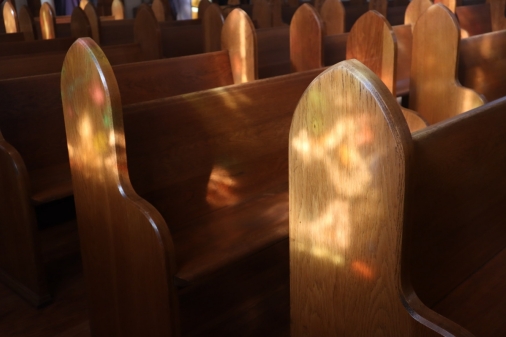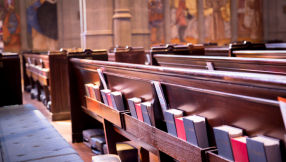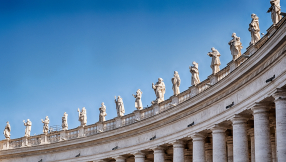
At Easter one of the lesser-known songs is “Wounded for Me”. It has an interesting backstory …
Children’s Special Service Mission (CSSM)
In June 1867, Josiah Spiers was working with children in Islington, London. These meetings grew rapidly and led to the start of the Children’s Special Service Mission (CSSM), an English charity which specialised in children’s holiday clubs. In 1879, CSSM introduced a system of daily Bible readings called the Children’s Scripture Union. Later children’s magazines were produced. In 1890, CSSM produced a book of young people’s songs and choruses called “Golden Bells”, which was popular across the church traditions. Booklets of notes were published for troops in the trenches during the Great War and led to the first issue of Daily Notes for adults.
Scripture Union
In 1923, Joseph H Hubbard developed Scripture Union notes. Some of their articles, leaflets, booklets, and songs were written by WG Ovens. He arranged to get the literature for Scripture Union printed with Page & Thomas printers of Chesham. Page & Thomas went on to print hundreds of thousands of daily reading notes, children’s magazines, and Sunday School materials which were distributed nationwide. The success of the Scripture Union notes led CSSM to take the name of Scripture Union. From 1926, Page & Thomas produced the revised “Golden Bells” songbook, which was printed in its millions and was exported worldwide.
Wounded for Me
One of the songs in Golden Bells suitable for Easter was called “Wounded for me”. This was written by Rev WG Ovens in 1931. He wrote the music and words to a catchy little chorus set in the key D Major, which uses the meter 8.10.10.10. The first verse goes:
"Wounded for me, wounded for me,
There on the cross He was wounded for me;
Gone my transgressions and now I am free,
All because Jesus was wounded for me."
Later the chorus was expanded into a song when a missionary friend, Gladys Westcott Roberts (1888-1983) added four more verses which started with “Dying for me”, “Risen for me”. “Living for me” and "Coming for me”. WG Ovens added it into the next edition of Golden Bells, and later the song appeared in a number of other songbooks, and was sung in churches throughout the English-speaking world.
WG Ovens
William Gilbert Jones (known as “WG”) Ovens was born in 1869 to William Gilbert Ovens, an engineer, and his wife Mary Ann at Peckham Rye in London. WG Ovens studied history and law at Cambridge, and then theology at Oxford. Although the family were in the Congregational tradition, in 1915 WG Ovens was ordained into the Church of England as deacon and then curate. However instead WG Ovens took a job with CSSM. To escape the air-raids in the Great War, in autumn 1917 he and his parents moved to Chesham in Buckinghamshire where they lived at Hillside (now 5), Stanley Avenue. WG Ovens then travelled most days by train from Chesham Station on the end of the Metropolitan Line to the CSSM offices in Wigmore Street, London.
WG Ovens worshipped at Emmanuel Church in Chesham, where he was an honorary curate. However, he turned down the option to become a priest, preferring to be a freelance preacher and evangelist. He was invited to preach in evangelical Anglican, Congregational, Baptist and Methodist churches. From 1925, WG Ovens became a CSSM children’s evangelist. For five weeks each summer he conducted CSSM beach missions in Newquay, Cornwall and later in Northern Ireland. He was a nationally acclaimed speaker and used to run missions at churches in England, speak at Scripture Union events, and speak at conferences like the Keswick Convention.
He was often asked to tell the story behind “Wounded for Me”. The story he related was that one day in 1931, whilst at home in Chesham, he read the story of how a clergyman met a wounded veteran limping past him on the street, and was impressed by the thought that, in a sense, the young man had taken that wound for him. He drew a parallel to a verse in the Bible at Isaiah 53:5, which is a reference to the Messiah, who was “wounded for our transgressions”. Christians apply this to the crucifixion, which is remembered at Easter. With these thoughts in mind, he wrote “Wounded for Me”.
Evacuated to Chesham
In September 1939, with war declared, WG Ovens arranged for the Scripture Union secretarial office to be evacuated from London to Chesham. It moved to Emberton, (now 26), Stanley Avenue, where seven key clerks were employed. WG Ovens’ mother had died in 1930 aged eighty-two, and his father died in 1935 aged ninety-one. After their deaths he spent the winter months living at Bratton Fleming, near Barnstaple in north Devon. Rev WG Ovens died in Lurgan, Northern Ireland in 1945 aged seventy-six. He is buried with his parents in Chesham cemetery. Scripture Union remained in Chesham until June 1946, when the offices moved back to London.
The song “Wounded for me” is still sung sometimes today but few know its backstory. You can hear it online at https://youtu.be/7kqylvfkJrU. A modern new arrangement can be found here https://www.youtube.com/watch?v=7kqylvfkJrU Since 1986 there is now also a Chinese version 為我受傷.













